May 24, 2025 | 11:31 GMT +7
May 24, 2025 | 11:31 GMT +7
Hotline: 0913.378.918
May 24, 2025 | 11:31 GMT +7
Hotline: 0913.378.918
According to the Lam Dong Department of MARD, the area of agricultural application of high technology according to the new criteria in the province reached 63,108ha. This is an increase of 2,880ha compared to 2020. The area consists of 25,910ha of vegetables; 2,062ha of flowers;4,934ha of tea; 22,031ha of coffee. It also includes 4,425ha of high-quality rice; 3,226ha of fruit trees; 134ha of medicinal herbs; 5.2ha of mushrooms; 381ha of nursery gardens.
The field of technology applied in high-tech agriculture includes advanced irrigation technology, saving water, combined with automatic fertilizer filling; biotechnology, and automatic technology associated with smart agriculture.
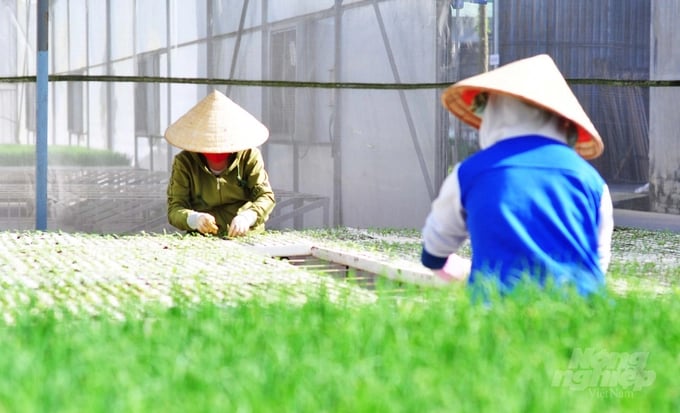
Lam Dong is a typical province with rapid development in hi-tech agriculture. Photo: Minh Hau.
- Advanced water-saving irrigation area reaches 44,265ha. The area consists of 40,061ha of sprinkler irrigation. This includes 23,967ha of vegetables, 2,194ha of flowers, 2,517ha of tea, 3,760ha of coffee, 7,489ha of fruit trees, 134ha of medicinal plants, and 3,929ha of drip irrigation. The nursery provides water for irrigation and nutrition through an automatic or semi-automatic 210 ha system. Additionally, there is 65ha of reflux hydroponics.
- Biotechnology: In vitro propagation technology has created disease-free seedlings with uniformity and stability in yield and quality. The province currently has 56 plant tissue culture facilities, producing over 72.38 million original seedlings annually, providing over 200 nurseries producing over 2 billion commercial seedlings. In crop cultivation, the Crop Production and Plant Protection Department has transferred the natural predators of harmful insects over 50ha of vegetables and flowers of all kinds.
- Using greenhouses and net houses: The province currently has 4,476ha of greenhouses (an increase of 133ha compared to 2020). Most of the greenhouse area mainly served flower production with 2,435ha (accounting for 54%), and vegetable production with 1,818ha (accounting for 41.7%)... The current net house area is 2,697ha (an increase of 238ha compared to 2020), mainly used in vegetable production and some application areas in flower production, nurseries of industrial plants, and perennial fruit trees.
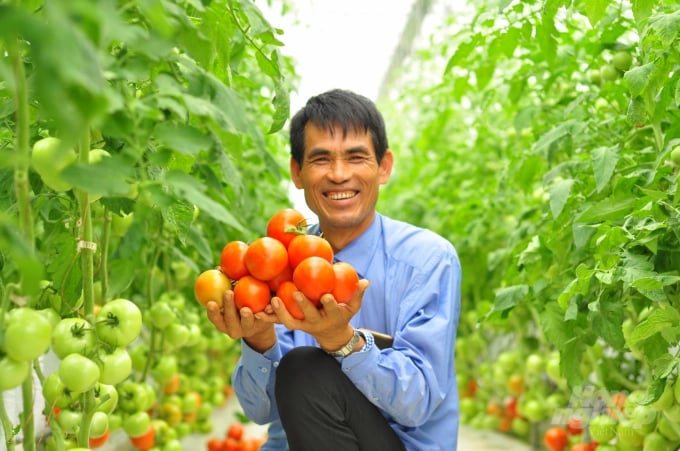
Up to 90% of vegetable and flower varieties in Lam Dong are imported from many countries. Photo: Minh Hau.
- Application of new seed technology: Up to 90% of vegetable and flower varieties in the province are imported from 19 countries (Netherlands, Japan, Taiwan, China, France, Belgium, Denmark, Italy, Israel, Kenya, Thailand, New Zealand, Korea, Germany, Peru, USA, Spain, Chile, Indonesia). The amount of imported varieties is 59.18 million trees, tops, branches, and flower seeds of all kinds; 6.12 tons of vegetable seeds; 730 tons of seed potatoes, and 5,707 potato seeds.
- Application of IoT technology in crop cultivation: The province has 376ha of crops with smart agriculture applications (an increase of 141ha compared to 2020). The Crop Production and Plant Protection Department deployed 2 models of IoT technology application in chain management of high-tech vegetable production and consumption in Da Lat and Duc Trong, Lac Duong, and Don Duong districts. IoT technology helps plants grow optimally, develop well, give high yield and quality; reduce 10-20% of pesticides and fertilizers in crop cultivation. This technology also reduces 30-50% of irrigation water and labor for enterprises, cooperatives, and farmers.
In 2021, the proportion of high-tech agricultural production value reached over 35% of the agricultural production value. This helps to increase profits by over 40% compared to revenue. The production value per unit of the cultivated area of the province in 2021 is VND196 million/ha, of which the value of hi-tech agricultural production will reach VND430 million/ha.
Translated by Hoang Duy
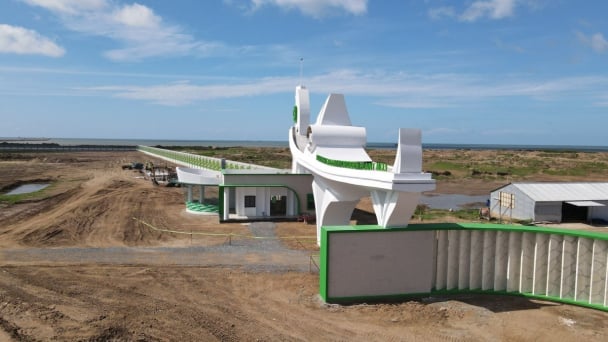
(VAN) The People's Committee of Tra Vinh province has approved an adjustment to the investment policy for the Green Hydrogen Plant project, increasing its area to approximately 52.76 hectares.
![Reducing emissions from rice fields: [2] Farmers’ commitment to the soil](https://t.ex-cdn.com/nongnghiepmoitruong.vn/608w/files/news/2025/05/05/dsc08881jpg-nongnghiep-140632.jpg)
(VAN) Clean rice cultivation model in Thuong Tan commune, Bac Tan Uyen district, is assisting local residents in achieving sustainable agriculture by substantially reducing costs, increasing productivity, and protecting the environment.
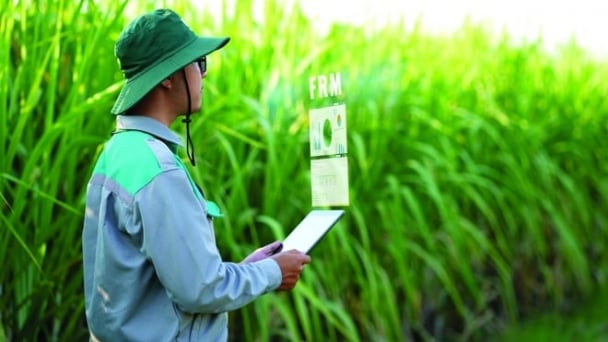
(VAN) At the conference to disseminate Resolution No. 68, AgriS introduced its digital agricultural ecosystem and reaffirmed its commitment to accompanying the Government in promoting private sector development and sustainable agriculture.
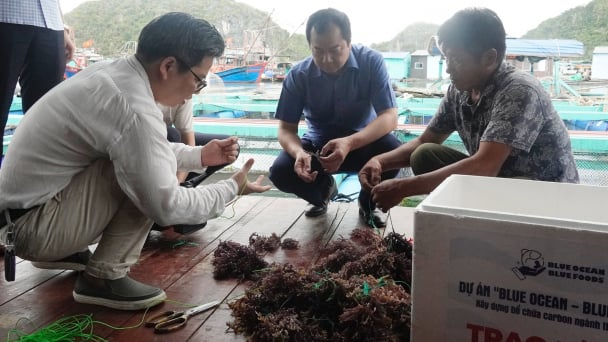
(VAN) 'Blue Ocean - Blue Foods' initiative is designed to restore marine ecosystems and establish sustainable livelihoods for local communities by cultivating a minimum of 1,000 hectares of cottonii seaweed in the first three years.
/2025/05/21/4642-3-112707_603.jpg)
(VAN) The V-SCOPE project has made direct contributions to three out of six pillars of the Comprehensive Strategic Partnership between Vietnam and Australia.
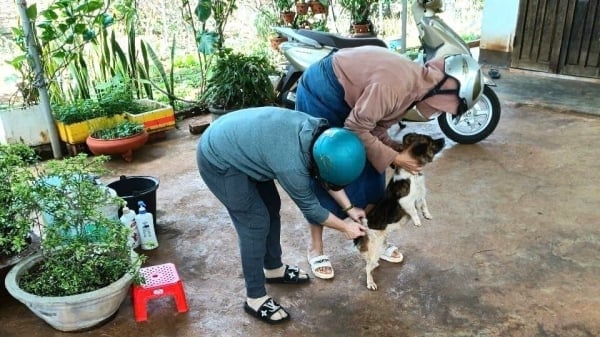
(VAN) Facing the threat of rabies spreading to the community, Gia Lai province urgently carries out measures to vaccinate dogs and cats on a large scale.
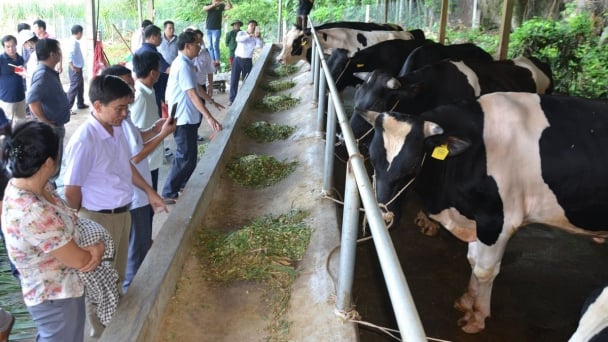
(VAN) Disease-free livestock farming not only protects livestock herds but also stabilizes production and livelihoods for many farmers in Tuyen Quang.